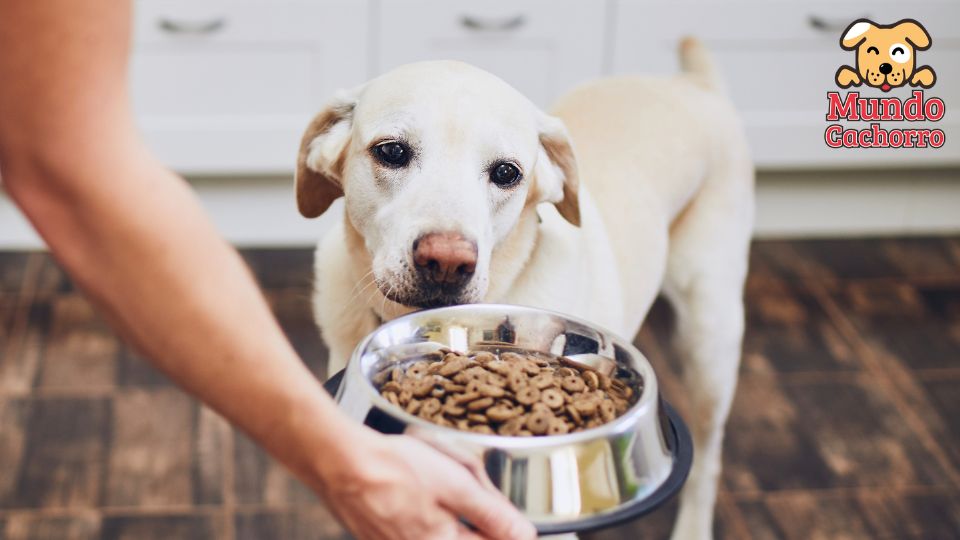When feeding a dog, a crucial aspect that often goes unnoticed is the amount of food offered. Owners, in their desire to see their pets happy, can fall into the trap of overfeeding or, in the worst case, not providing them with the amount of food they really need. This situation can lead to serious health problems, from obesity to malnutrition, that affect the dog’s quality of life. Therefore, it is essential to understand how much food is appropriate to ensure their well-being.
Indice
La importancia de conocer las necesidades específicas de tu perro
Each dog is unique, and therefore, its nutritional needs vary depending on its breed, size, age, activity level and state of health. There is no single formula that works for all dogs. For example, a large breed dog such as a German Shepherd will have different caloric requirements than a small dog such as a Chihuahua. Likewise, a young, active dog needs more calories than a senior dog that spends most of the day resting.
Cómo crear una rutina para alimentar a tu perro
To determine the proper amount of food, it is essential to consider specific factors. A veterinarian can provide initial guidance based on evaluation of the dog. However, it is also important to observe the animal, as its weight and body condition will provide clear signals as to whether it is receiving the correct amount of food. A dog with a healthy figure should have a visible waistline and not show prominent ribs, but these should be palpable to the touch.
Consecuencias de la sobrealimentación
Overfeeding is one of the most common mistakes in dog breeding, and its effects can be devastating. When a dog consumes more calories than it needs, it begins to accumulate fat, which can lead to obesity. This condition not only affects a dog’s mobility, but also puts him at risk of developing serious diseases such as diabetes, heart problems, hypertension, and joint disease.
Obesity in dogs has become a growing problem, in part due to owners’ lack of knowledge about their pets’ caloric needs. In addition, many owners do not take into account the extra calories from treats and treats. These extra treats, if left unchecked, can add a significant amount of calories to a dog’s daily diet.
Qué es cross feeding y por qué es beneficioso para tu perro
Another problem associated with overfeeding is decreased life expectancy. An obese dog is more likely to live fewer years than a dog with a healthy weight. The reason is that excess weight overloads the body’s organs and systems, which can eventually lead to organ failure or serious complications.
Riesgos de la subalimentación
On the other hand, underfeeding also presents serious risks. A dog that does not receive enough food will not get the nutrients needed to maintain its health. This can result in weight loss, weakness, loss of muscle mass, and vitamin deficiencies. An underfed dog may show signs such as hair loss, skin problems, and a decreased ability to fight disease.
Dogs that do not receive the correct amount of food can also develop behavioral problems. A hungry dog may become more anxious, destructive or even aggressive. In addition, lack of energy due to insufficient nutrition can affect their ability to perform physical activities, which in turn impacts their mental and emotional health.
Cómo determinar la cantidad correcta de comida
Determining the correct amount of food for a dog involves a combination of veterinary consultation, ongoing observation and adjustment as needed. Commercial dog foods often provide guidelines on their packaging, but these are only general suggestions. Best practice is to start with the manufacturer’s recommendation and then adjust according to the dog’s individual needs.
¿Conoces los beneficios de alimentar a tu perro con comida natural? ¡No te lo pierdas!
Regular monitoring of the dog’s weight is essential. If the dog begins to gain unwanted weight, it is probably consuming more calories than it burns. In this case, the amount of food should be reduced or physical activity should be increased. Conversely, if the dog loses weight or shows signs of malnutrition, the amount of food should be increased.
It is also important to consider the quality of the food provided. Not all dog foods are the same; some have a higher concentration of nutrients, which means that the dog may need less of it to meet its needs. By opting for high quality foods, you ensure that the dog receives all the essential nutrients without the need for large portions.
El papel de la actividad física
The amount of food a dog needs is closely related to its activity level. A dog that exercises regularly will burn more calories and therefore require more food. On the other hand, a sedentary dog will not require as much energy. It is essential to adjust the diet according to changes in the dog’s activity level. For example, a dog that takes long daily walks or participates in agility activities will need more calories than a dog that only goes out in the yard to relieve itself.
Consejos prácticos para una alimentación balanceada
To ensure that the dog receives the right amount of food, here are some practical tips:
- Consulta regularmente con un veterinario para ajustar la dieta según la edad, peso y nivel de actividad del perro.
- Mide las porciones cuidadosamente. Evita estimar la cantidad de comida a ojo, ya que esto puede llevar a errores.
- Controla el peso del perro regularmente y ajusta la cantidad de comida según sea necesario.
- Considera la calidad del alimento. Opta por alimentos que proporcionen una nutrición balanceada.
- Evita alimentar al perro con sobras de comida humana, ya que esto puede desequilibrar su dieta y añadir calorías innecesarias.
- Reduce las golosinas si el perro comienza a ganar peso y no olvides descontar estas calorías de su ración diaria.
Proper nutrition is key to your dog’s health and happiness. Providing the right amount of food not only ensures that your dog stays at a healthy weight, but also prevents long-term health problems. The combination of a balanced diet and an adequate amount of exercise will keep your dog at its best, both physically and emotionally. Therefore, taking the time to understand and adjust your dog’s diet is an investment that will translate into years of wellness for your faithful companion.








